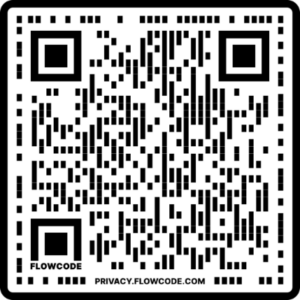
I am job-coaching a talented young man who I will call Jim (not his real name and the image above is not him). Having gone through the preliminary stages of a job search, such as career exploration, resumes, and informational interviews, it was time to practice nonverbal communications.
Like the fellow above, Jim did not realize the importance of nonverbal communications, for example, eye contact, smiling, body posture, handshake, and hand gestures.
Regardless of what is being said, or heard, the nonverbal signals given off by the man in the above image are clear — he is screaming, “OH NO, NOT AGAIN!” Words are not needed to convey the overwhelming lack of interest on his part. OK, maybe his flight was delayed and he only got three hours of sleep the night before this conversation. Or maybe he had a rager the night before and is hung over. Whatever the cause, the nonverbal message is crystal clear: “Find someone else who cares.”
What are Verbal, Vocal, and Nonverbal Communications?
I showed my mentee Jim the pie chart below, summarizing the findings of retired academic psychologist Albert Mehrabian about how meaning is conveyed when communicating about feelings and attitudes in interpersonal (i.e., small group or one on one) settings.

Source: Albert Mehrabian, Silent Messages
It was ironic that a wordsmith like myself would tell Jim that only a very small portion of meaning is conveyed through words. Far more impactful are vocal characteristics, such as a person’s speaking cadence, tone of voice, and volume. But most impactful of all are the nonverbal attributes.
That’s not to say words are unimportant. In fact, in our first role-playing exercise, I faced away from Jim as he answered the traditional job-interview question, “So, tell me about yourself.” I did that to better focus on his words and vocal characteristics. I continue to think words are the foundation of all communications. But they won’t, by themselves, carry the day.

For example, Sally (left) might be saying, “That’s good to hear” or “I totally agree with you,” but her nonverbal communications say just the opposite: “I am not open to what you are saying.”

And Jennifer (right) might be saying, “OK, I agree with your approach,” but her facial expression conveys doubt or uncertainty at best, outright opposition at worst.
When are Nonverbal Communications Important?
When are non-verbal communications important? A better question might be, when are they not important?
- When interacting with others within your utility, what signals are you sending and receiving? Does your body language undermine what you are saying?
- If you are a supervisor or manager, you will have to conduct performance reviews of those you manage. These one-on-one sessions are intensely personal, and sometimes difficult. Be sure your words align with your nonverbal communications.
- Also, supervisors and managers can eliminate a lot of the tension in a year-end review if you hold monthly one-on-one sessions with those you supervise. That’s another important time when your body language and spoken language need to reinforce each other.
- For those responsible for interacting with the news media, or for coaching executives who do, conduct role-playing exercises with another communicator who could point out a misalignment between verbal and nonverbal communications.
- Particularly now, as so many utilities are trying to navigate so many changes, gaining employee buy-in for a desired change is more important than ever. Aligning your spoken and unspoken signals can build employee confidence, trust, and commitment.
- You shouldn’t have to practice being authentic, but some leaders are uncomfortable addressing large audiences, like all-hands meetings. They could inadvertently sabotage themselves if their verbal, vocal and nonverbal communications are not in synch. In a group setting like an all-hands meeting, employees will be comparing notes as they file out of the meeting room. What’s the first question they would ask a peer? “Did you believe what we were told?” If a speaker’s body language or vocal characteristics don’t support their words, employees will pick up the disconnect and disregard what they just heard.
Because I want readers, friends, and colleagues to be as successful as possible, I encourage them to investigate nonverbal communications. There’s no shortage of articles, books, videos, and other free resources where you could learn more about nonverbal communications. We even have a few blog posts on nonverbal communications, such as here and here.
- Shutterstock has about 917 video clips on YouTube about nonverbal communications. Sometimes it’s easier to recognize good, or bad, nonverbal communications by watching others!
- Here’s a link to a TEDx talk on nonverbal communications. Here’s another. Here’s a third.
- The Economist recently published a piece on gestures, one type of nonverbal communication.
- For those seeking a more rigorous academic exploration of nonverbal communications in the workplace, check out this article in the Journal of Management.
Communications tip of the month: Regardless of your title, job responsibilities, or the context of a discussion, you are communicating with everyone all the time, whether or not you use words. By becoming attuned to the impact of nonverbal communications, you can be sure that your words, vocal characteristics, and nonverbal communications align to greater effect.
Your Career Success Depends on Effective Communications
In addition to the bulleted list above, there’s another reason to ensure your verbal, vocal, and nonverbal communications are aligned: Your career advancement.
After a certain point in your career, advancement depends more on your leadership skills than specialized knowledge obtained through advanced degrees or professional certifications. Leadership opportunities could entail guiding a cross-functional team or managing a larger number of employees. In those situations, your performance turns, to a large degree, on being an effective communicator. You may have to inspire people you don’t directly manage. In other words, you can’t order those you don’t control to do something. Upping your persuasion game means honing your nonverbal communications, to ensure they align with the words and vocal characteristics you use.

A few years ago, after speaking at an energy-industry conference, my friend and colleague Erick Rheam made available an e-book on the 10 Body Language Mistakes to Avoid. The QR code to receive that book is below. Or you can learn more about Erick and his business by emailing him here. I believe his e-book will make you a better leader, speaker, manager, employee, and mentor.
Courtesy: Erick Rheam

or example, here is a depiction of Erick’s Mistake #5: checking your phone when you’re supposed to be engaging with other people. This shows a lack of interest and respect for others. Smart phones and texting have made this an epidemic.
Nonverbal Communications: Practice Makes Perfect

I was fortunate early in my career to work at a large utility that had a very well-resourced audio-video department. In preparation for a speech I would deliver at an industry conference, they videotaped me delivering that speech verbatim. One take had the microphone turned on, which allowed me to focus on the verbal components of the talk, but the second take was done without the microphone, so I could concentrate on my nonverbal communications. Both takes were extremely instructive!
Courtesy: SRP
I know some larger utilities have these in-house capabilities. But even if your utility does not have capabilities, you may be able to find a coach/videographer who could put you through the paces. On occasion, I have provided that type of training.
Utilities should be willing to cover this type of expense as a form of professional development, particularly for communicators and marketers. But even if you have to pay for training out of your own pocket, the investment will be repaid over time.
At various times since founding EEC, I have provided media training to clients. One part of that training includes individual participants delivering five minutes of opening remarks on a somewhat controversial topic to a small group of half a dozen people who function as the audience. The presentation is followed by 10 minutes of Q&A from the audience. The opening remarks and the Q&A session are recorded.
As a group, we then review each participant’s video. On occasion, I have seen a speaker cover his or her eyes watching the replay, so worried that they would come off badly sometimes with comments like, “What the …?” and “Oh No!” Nothing perfectly captures the way you present yourself than a video recording!
Whether you or another member of your communications and marketing team are in front of a camera or in front of a live audience, remember that your nonverbal communications can speak much louder than words, and can have everything to do with the success of your messaging.
Photo Credits: iStock unless otherwise noted
__________________________________________________________________________


